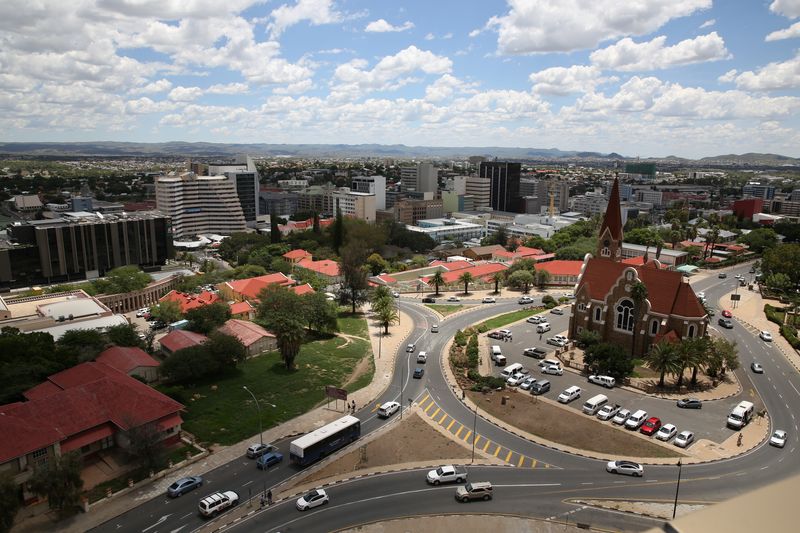By Johann M Cherian
(Reuters) - The discovery of increased reserves of crude oil in Namibia has sparked interest in Namibian assets, with an index fund tracking local government bonds poised for its biggest annual jump on record.
The Exchange Traded Fund tracking local government bonds is listed on the Namibian Stock Exchange and in South Africa and has jumped over 20% in U.S. dollar terms since Portugal-based Galp's discovery in April that the Mopane field could hold at least 10 billion barrels of oil.
Since then there has been interest from at least 12 other oil majors.
The fund is on track for its biggest annual gain - nearly 12% in U.S. dollar terms. Meanwhile, an ETF tracking the closely watched JPMorgan (NYSE:JPM) emerging markets bonds index has gained 3.6% year-to-date.
Yields on local sovereign bonds have dropped further following the discovery, with those on bonds maturing in 2037 declining around 150 bps since April, while those on papers maturing in 2050 down around 200 bps.
"Most of the bonds issued are held by Namibian pension funds, but we are seeing some foreign buying now. We have seen massive yield compression ... since the oil discoveries were first announced," said Rowland Brown, co-founder of Cirrus Capital based in Windhoek.
Brown added that Namibian government bonds were still paper- settled, leaving foreign investors looking to the ETF to increase exposure to the resource-rich country.
The southwest African nation has garnered attention from major international energy companies following several major discoveries in recent years along its coast, although the country has not yet produced any oil or gas.
TotalEnergies (EPA:TTEF) and Shell (LON:RDSa) say they expect production in 2029-2030.
PRESIDENTIAL ELECTION
The local equities index has gained over 19% year-to-date in U.S. dollar terms, compared with a 7.5% gain in MSCI's index tracking emerging markets equities.
On the currency front, the Namibian dollar has strengthened 4.5% against the greenback this year, snapping a four-year losing streak, with total central bank reserves soaring nearly $1 billion since December 2019, as per LSEG data.
Against the backdrop of Namibia's economic potential following its oil discoveries, attention will be on any changes to the economic policy after a presidential election due at the end of the year.
Graham Hopwood, executive director at Institute for Public Policy Research in Windhoek, expects the ruling left-leaning South West Africa People's Organisation candidate Netumbo Nandi-Ndaitwah to win.
"One signal to watch is whether she keeps the level-headed finance minister in his post. He is cautious and sees the importance of reducing debt and avoiding outlandish promises to the electorate," he said.
Namibian debt stands at over 60% of its gross domestic product, but analysts say that the fact that a majority of the bonds are issued domestically still remains a positive for the country.
Earlier this year, ratings agency Fitch affirmed a "stable" outlook for Namibia on expectations that the government debt to GDP ratio will stabilise in the medium term, while Moody's lifted the country's outlook to "positive" from "stable".
The Namibian economy is heavily dependent on mineral exports including diamonds and rare earths. But following recent discoveries, energy could eventually overtake mining in terms of significance to the middle-income country's economy.

"Oil exports per capita out of Namibia will look like a Gulf state in the 2040s, provided they are competitive globally ... which should be a positive for debt to GDP ratios in the country," said Charlie Robertson, head of macro strategy at FIM Partners.
In South America, a similar oil boom in Guyana has been key to its economic growth that is expected to increase by 34.3% in 2024, its fifth straight year of GDP growth above 20%.